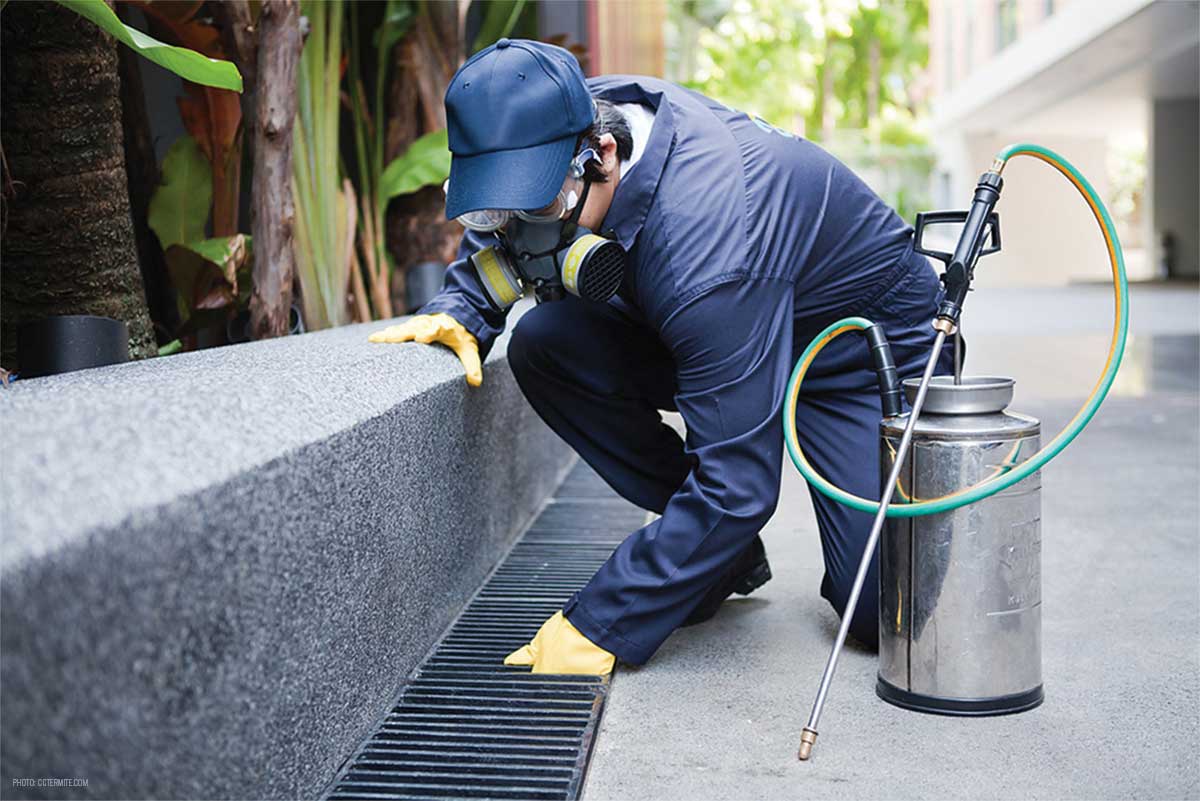Exterminator DC: Your Option for Pest-Free Residing In Washington DC!
Exterminator DC: Your Option for Pest-Free Residing In Washington DC!
Blog Article
Expert Insect Control Techniques for Long-Term Outcomes
In the realm of parasite control, attaining continual efficacy and long-lasting outcomes requires a meticulous technique that goes beyond simple extermination. Expert parasite control methods envelop an extensive method that starts with an extensive inspection and evaluation, adhered to by specific pest identification to recognize their actions patterns. The application of Integrated Bug Monitoring (IPM) principles, combined with eco-conscious therapies, develops the cornerstone of lasting parasite eradication. However, truth test depends on the ongoing monitoring and maintenance of the treated locations, making sure a pest-free environment for the near future. By delving into the complexities of these methods, a deeper understanding of professional bug control approaches for withstanding end results arises.
Examination and Evaluation
Upon getting in a building for bug control services, the first step is a detailed assessment and evaluation to recognize the level of the infestation and establish the most efficient therapy plan. Professional insect control specialists are educated to carefully check out the facilities, searching for indicators of insect task such as droppings, munch marks, nests, or any type of structural damages. They will additionally examine the conditions that may be bring in insects, such as food sources, water leakages, or access points.

Insect Recognition and Habits

Moreover, comprehending the behavior of the recognized pest is essential to carrying out reliable control measures. Understanding where bugs nest, what they feed on, and their task patterns can help pest control experts create strategies to eradicate them efficiently. Some pests may be nocturnal, while others are much more energetic throughout the day. This knowledge enables the application of therapies at optimum times for maximum effectiveness.
Integrated Insect Monitoring (IPM)
Integrated Insect Administration (IPM) approaches combine multiple methods to manage and avoid pest problems in a lasting and eco-friendly manner. exterminator. By incorporating methods such as organic control, environment adjustment, modification of social methods, and making use of immune varieties, IPM aims to reduce the use of chemical pesticides
One of the crucial principles of IPM is the emphasis on prevention. This positive technique includes surveillance bug populations routinely to identify any kind of prospective problems prior to they escalate. By recognizing pest issues early on, pest control measures can be applied promptly and properly.
Moreover, IPM promotes making use of safe parasite control approaches whenever feasible. This can consist of employing all-natural predators of the pests, introducing valuable bugs, or making use of scents to disrupt breeding patterns. By lowering dependence on chemical pesticides, IPM not just shields the atmosphere but also assists maintain an equilibrium in the ecosystem.
Environmentally-Friendly Therapies
Executing eco-conscious approaches in parasite control treatments can properly attend to invasions while focusing on ecological sustainability. Environmentally-friendly therapies concentrate on lessening the effect of insect control methods on environments, non-target organisms, and human wellness. These approaches usually involve the use of natural killers, such as ladybugs or nematodes, to control pest populations, reducing the demand for chemical treatments. In addition, strategies like environment manipulation, such as readjusting dampness degrees or getting rid of food sources, can help discourage parasites without using dangerous substances.
One more key facet of environmentally-friendly treatments is the usage of organic and eco-friendly products that break down quickly without leaving harmful deposits in the environment. Botanical pesticides derived from plants like chrysanthemums or neem provide efficient parasite control while positioning minimal threat to non-target varieties. Furthermore, using approaches like heat therapies or pheromone catches can target particular bugs bed bug exterminator with accuracy, lowering the overall environmental influence of pest control methods.
Ongoing Tracking and Upkeep
Constant surveillance and upkeep are vital elements of reliable bug control management. Ongoing monitoring plays an important role in making certain that pest infestations are spotted very early and handled quickly. Regular assessments by skilled experts are required to determine any kind of signs of pest task, assess the performance of previous therapies, and make changes to the pest control strategy as required. By monitoring parasite populaces with time, pest control professionals can track patterns, anticipate potential concerns, and apply preventive actions to minimize the threat of future infestations.
In enhancement to surveillance, upkeep methods are important for long-term insect control success. This includes applying appropriate sanitation procedures to eliminate possible food and water sources for parasites, sealing off access points to protect against bugs from entering the properties, and resolving any type of architectural problems that could facilitate bug problems (bed bug heat treatment). By integrating ongoing monitoring and maintenance into an integrated pest management approach, businesses can ensure a pest-free setting and secure their property against costly damages and health and wellness risks
Verdict
Finally, utilizing professional insect control methods such as comprehensive assessment and evaluation, precise parasite identification and understanding of their actions, integrated pest monitoring methods, environmentally-friendly therapies, and continuous surveillance and upkeep are essential for attaining lasting results in insect control. By executing these techniques, individuals can efficiently handle insect invasions and preserve a pest-free atmosphere in a sustainable way.
Report this page